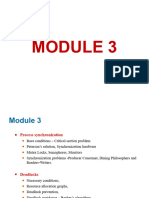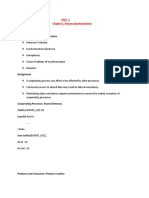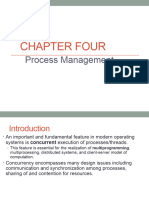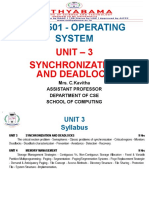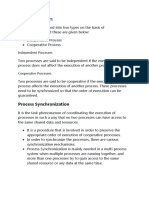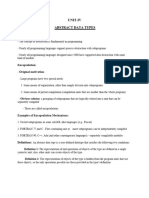0% found this document useful (0 votes)
102 views75 pagesModule 3 PDF
This document discusses process synchronization and solving the critical section problem using semaphores. It describes the bounded buffer problem and how concurrent access can result in race conditions when updating shared data. Classical problems like mutual exclusion, progress, and bounded waiting are addressed. Semaphores are introduced as a synchronization tool to prevent busy waiting and allow orderly access to critical sections. Implementation of semaphores using wait queues and potential issues like deadlock and starvation are also covered.
Uploaded by
Rajadorai DsCopyright
© © All Rights Reserved
We take content rights seriously. If you suspect this is your content, claim it here.
Available Formats
Download as PDF, TXT or read online on Scribd
0% found this document useful (0 votes)
102 views75 pagesModule 3 PDF
This document discusses process synchronization and solving the critical section problem using semaphores. It describes the bounded buffer problem and how concurrent access can result in race conditions when updating shared data. Classical problems like mutual exclusion, progress, and bounded waiting are addressed. Semaphores are introduced as a synchronization tool to prevent busy waiting and allow orderly access to critical sections. Implementation of semaphores using wait queues and potential issues like deadlock and starvation are also covered.
Uploaded by
Rajadorai DsCopyright
© © All Rights Reserved
We take content rights seriously. If you suspect this is your content, claim it here.
Available Formats
Download as PDF, TXT or read online on Scribd
/ 75


















